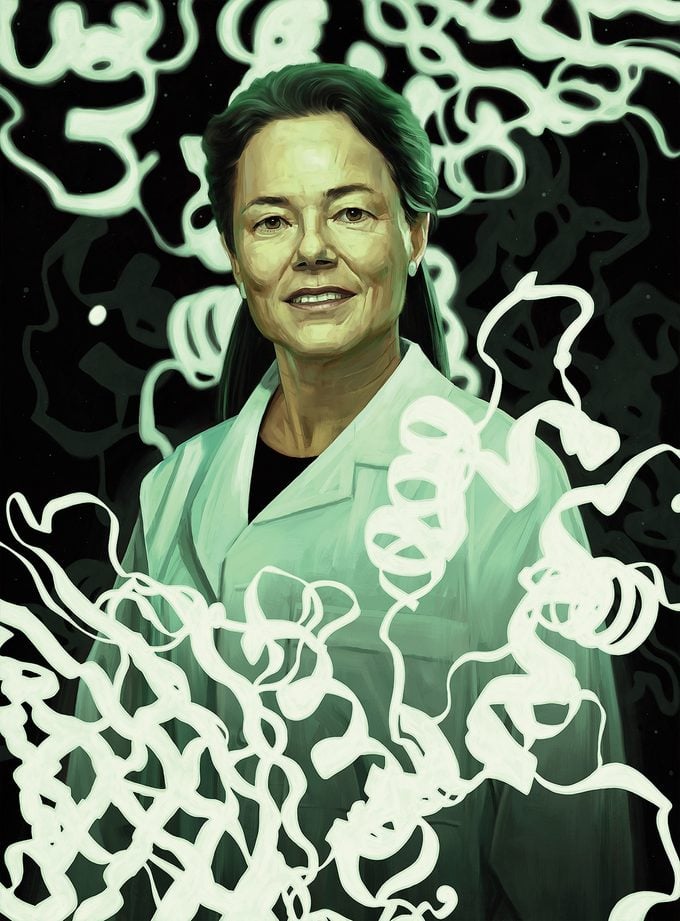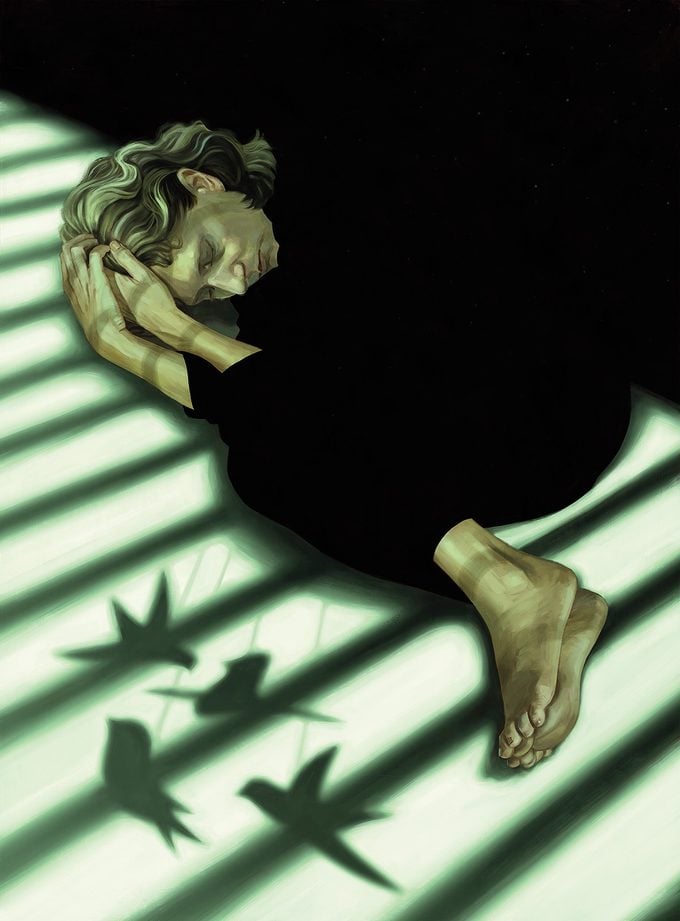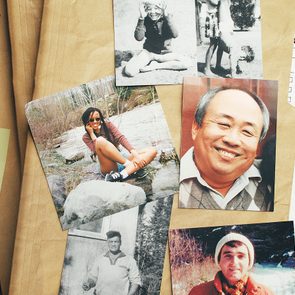A Mother Was Convicted of Murdering Her Children—Until Science Uncovered the Truth
After all four of Kathleen Folbigg's children died in infancy, a court found her guilty of murder. Twenty years later, DNA evidence revealed what really happened.

Dr. Carola Vinuesa was in her office at the John Curtain School of Medical Research in Canberra, Australia, one afternoon in August 2018 when she received a call that both changed her life and saved another. As a professor of immunology, Vinuesa immersed herself in the fascinating and complex world of genetics.
The call was from David Wallace, a former student at John Curtain whom she hadn’t spoken to in years. He presented Vinuesa with a scenario that was equal parts shocking, intriguing and devastating: An Australian woman named Kathleen Folbigg had been sentenced to decades in prison for murdering her four children, all infants, over a period of 10 years. The case had captivated the nation. Many were abhorred by Folbigg’s crimes; others questioned the veracity of her guilt.
Given the paucity of evidence used to convict Folbigg, asked Wallace, could Vinuesa’s research shed light on what actually happened to the children?
Over the next five years, Vinuesa and an international team of scientists would dedicate much of their lives to answering this question. Their findings would shake up Australia’s judicial system, raise questions about the treatment of mothers accused of killing their children and shine a light on the misuse of scientific evidence.
Folbigg, who was born Kathleen Megan Britton in Balmain, an inner-city suburb of Sydney, on June 14, 1967, was haunted by tragedy, instability and alienation from the very beginning. In December 1968, her father, Thomas Britton, stabbed her mother to death during an argument; he served 15 years in prison before being deported to his native England. Young Kathleen was shipped off to live with her mother’s sister in western Sydney.
Any hopes that Kathleen would have a warm and safe childhood were soon dashed. The girl’s aunt, known in court records as “Mrs. Platt,” complained to child-welfare authorities in spring 1970 that Kathleen was aggressive, impolite, unclean and preoccupied with masturbation—and that the strain of caring for her niece was causing her marriage to deteriorate. She no longer wanted the girl. Kathleen was not yet three years old.
Doctors determined that the girl had likely been abused by her father. She was also found to have an unusually low IQ, largely attributed to her withdrawn and restless nature. In September 1970, she was placed into the care of a foster family, Deirdre and Neville Marlborough, who lived in Newcastle, 120 kilometres north of Sydney.
At first she bonded with the family and settled into school. But the legacy of her catastrophic early years took its toll: She was caught shoplifting, left school early and struggled in her relationship with Deirdre. At 17 she left home and moved in with the family of a friend.
A year later she met a 23-year-old forklift driver named Craig Folbigg at a nightclub in Newcastle. Craig was tall with brown hair, a pronounced nose and an easy smile. Charming and chatty, he seemed like Kathleen’s rescuer. Together, they could make the home she had always needed. They married in 1987, when Folbigg was just 20, and rented an apartment in Georgetown, Newcastle. Folbigg found a job as a waitress at an Indian restaurant.
Craig was one of eight children and wanted a big family himself. Soon the couple was expecting. Thrilled, Kathleen Folbigg became protective of her unborn child: Craig was forbidden from smoking indoors, and Folbigg improved her diet. When Caleb was born in February 1989, Folbigg told people that she felt complete; after so many years of upheaval, she had a husband, a home and a baby.
But on February 20, 1989, tragedy struck. Folbigg found Caleb, just 19 days old, dead in his crib. An autopsy identified the cause of death as sudden infant death syndrome (SIDS).
Folbigg was devastated but not deterred, and she was soon pregnant again. When Patrick was born in June 1990, he underwent extensive testing, including a sleep study. The results were normal. Still, Folbigg was terrified for Patrick’s life.
It turned out that she had reason to be afraid: On October 18, 1990, four-month-old Patrick had what was known as an apparent life-threatening event, typically associated with oxygen deprivation. It resulted in brain damage, visual impairment and seizures for which Patrick was repeatedly hospitalized.
Caring for her disabled baby became the focus of Folbigg’s life. Few waking moments were spent without Patrick on her mind or in her arms. By February 1991, he was gone, too. The cause of death was listed as asphyxia due to airway obstruction related to his seizures.
Feeling that she was to blame for deaths of her two children, Folbigg fell into a deep depression. She decided that she and Craig needed to uproot their lives if they were going to beat whatever was plaguing their family. They sold their house and moved to Thornton, just north of Newcastle. Craig got a job selling cars, and Kathleen Folbigg found work at a baby-product retailer, a job that spoke to her heartbreaking desire for a family.

Sarah was born on October 14, 1992. She, too, underwent numerous tests, which didn’t find any problems. Sarah appeared to be developing typically, but Folbigg became obsessed with the possibility of losing her. The couple started to feel the strain.
One night, when Sarah was 10 months old, Craig saw Folbigg “growl” at Sarah as she tried to get the baby to fall asleep. She passed Sarah to him, telling him to deal with her. The next day, August 30, 1993, Sarah died. The autopsy concluded that the cause of death was SIDS.
What could possibly explain this terrible misfortune? In the wake of Sarah’s death, Craig became severely depressed, beyond the reach of his wife’s attempts to help. In a bid to change their luck, they bought a home in Cardiff, on the western edge of Newcastle, not far from Craig’s family.
The marriage started to crack under the strain. The couple separated repeatedly, but they reunited each time—whether through genuine mutual love or the shared bond of repeated trauma. They moved yet again, this time to the nearby Hunter Valley, and decided to have another baby.
Laura was born on August 7, 1997, almost four years after Sarah’s death. She was another healthy baby but was subject to even greater scrutiny, including a full panel of biochemical, blood and metabolic tests. For 12 months, cardiorespiratory monitoring indicated no problems with Laura’s breathing and heart function. As Laura’s first birthday approached, Folbigg planned a big party. She finally had a healthy baby, and her anxiety eased. The life she had planned for herself was coming to fruition after three heartbreaking false starts.
But the couple was once again falling apart. Kathleen Folbigg was a devoted mother, but Craig was concerned about her flashes of anger. One night in late February 1999, he noticed the strain between Folbigg and Laura, then almost 18 months old. “Oh, she’s got the sh—s with me,” Folbigg told him. “It’s probably over what I did to her last night. I lost it with her.”
At breakfast the next morning, March 1, Folbigg was struggling to feed cereal to Laura. She then pulled her out of the high chair, put her on the ground and told her to “go to your f——ing father.” When Craig went to work, Laura was watching television.
Later that morning Folbigg called Craig at work and apologized for losing her temper. She then took Laura to visit him during his morning break. Laura fell asleep in the car on the way home, and Folbigg carried her to bed. Laura died later that day. This time, the autopsy was inconclusive, though it did note that Laura had myocarditis, an inflammation of the heart.
Suspicion mounts
On the afternoon of March 1, 1999, shortly after Laura became the fourth Folbigg child to be pronounced dead in 10 years, a police officer met the couple at the hospital. The sudden deaths of the four Folbigg children, all apparently healthy at birth, suggested something sinister to police: It wasn’t a one-in-10-million unlucky happenstance. Could Folbigg have killed them?
As the police ramped up their investigation—including a search of the Folbiggs’ home—the couple’s relationship was once again on the rocks. They separated permanently in June 2000, still under police suspicion. On April 19, 2001, Kathleen Folbigg was arrested and charged with four counts of murder. She pleaded not guilty to all charges.
The jury trial began in spring 2003 at the Supreme Court of New South Wales in Sydney. In photographs taken during the trial, Folbigg looked as if she were sleepwalking—her eyelids heavy, her complexion pale.
The prosecution’s case laid out a cold take on the children’s deaths: Folbigg had asphyxiated each one. The circumstantial evidence seemed overwhelming. Each child was apparently healthy before dying in their own bed, and Folbigg was. both the last person to see each one alive and the one who had found them dead.
But the case wasn’t just circumstantial. After the couple had separated for good, Craig discovered his wife’s diaries. He later told the jury that what he read “made me want to vomit.” Crown lawyers used the diaries to allege that Kathleen Folbigg tended to “become stressed and lose her temper and control with each of her four children.” She was accused of frustration, impatience and even cruelty with her children.
The prosecutors suggested that more than 200 entries indicated that she didn’t love and hadn’t bonded with any of her children, and that motherhood left her so stressed and resentful that she was pushed to the darkest of acts.
June 3, 1990: This is the day that Patrick Allen David Folbigg was born. I had mixed feelings this day whether or not I was going to cope as a mother or whether I was going to get stressed out like I did last time. I often regret Caleb and Patrick, only because your life changes so much, and maybe I’m not a person that likes change, but we will see.
November 9, 1997: With Sarah, all I wanted was her to shut up and one day she did.
January 28, 1998: I feel like the worst mother on this earth, scared that [Laura] will leave me now, like Sarah did. I knew I was short tempered and cruel sometimes to her and she left, with a bit of help. I don’t want that to ever happen again. I actually seem to have a bond with Laura. It can’t happen again. I’m ashamed of myself. I can’t tell Craig about it because he’ll worry about leaving her with me.
Kathleen Folbigg’s conviction
The prosecutors argued that a grieving mother would not write these things. Even if the science surrounding the children’s deaths was inconclusive, the diaries were presented as clear evidence that Folbigg was an unfit mother. How far was the leap from unfit to violent?
Folbigg wasn’t the first woman convicted of killing her children under similar circumstances. Many of these cases were influenced by Roy Meadow, a British pediatrician who developed a theory that became known as “Meadow’s Law”: One sudden infant death in a family is a tragedy, two deaths are suspicious, and three are murder unless proven otherwise. Charles Smith, a Toronto pediatric pathologist and a go-to prosecution expert in criminal trials of people accused of mistreating their children, used a similar approach. Meadow and Smith had inverted the common-law tradition of presumption of innocence.
Both men have since been discredited, and many of the people they helped convict were later exonerated, but the damage was extraordinary. Sally Clark was a British lawyer convicted of murdering her two infant sons in 1999. A later review found that Meadow had misrepresented statistical evidence at her trial, and a pathologist had withheld evidence that pointed toward natural death. Clark’s release in 2003 prompted a review of hundreds of cases in the U.K., and several other mothers had their convictions overturned.
But the assumption of guilt informed similar cases. On May 21, 2003, Kathleen Folbigg was found guilty of three counts of murder, one count of manslaughter and one count of inflicting grievous bodily harm. The following October she was sentenced to 40 years in prison, with no chance of parole for 30 years, and was incarcerated at Silverwater Women’s Correctional Centre in Sydney. She was 35 years old. On appeal, her sentence was reduced to 30 years with no chance of parole for 25 years.
New evidence emerges
Tracy Chapman, a childhood friend who had largely drifted out of Kathleen Folbigg’s life, was galvanized by her arrest. As she followed the trial, Chapman became convinced that Folbigg would be found not guilty. Shortly after the conviction, she reached out to Folbigg. She called the lawyers and read through transcripts, desperately trying to figure out how her friend could be exonerated.
She and Kathleen Folbigg mostly communicated through long letters, in which Folbigg detailed her day-to-day life in prison. Most strikingly, Folbigg—whom Chapman describes as an animal lover with a terrific sense of humour—hadn’t lost her compassion or decency, even as she struggled with her grim reality. “She’s got a strong moral compass,” says Chapman. “And I supported her to not allow the system to eat that up.”
Other people also started to question Kathleen Folbigg’s guilt. One of the earliest dissenting voices came from Emma Cunliffe, an Australian working on her PhD in law at the University of British Columbia. She approached the Folbigg case through a feminist lens, part of an emerging consensus among some scholars that investigators and prosecutors were prone to discriminatory reasoning against women—particularly with mothers accused of harming or killing children.
As Cunliffe reviewed the trial records, she was disturbed that so many people involved in the case were certain of her guilt even though there was no evidence of homicide. She also found the use of Kathleen Folbigg’s diaries to be both highly prejudicial and misleading.
“The Crown’s case was that the unexplained deaths of four children within the same family, coupled with the diary entries and evidence about Kathleen Folbigg’s tendency to become frustrated, were sufficient to prove beyond a reasonable doubt that Kathleen Folbigg had killed each of her children,” Cunliffe wrote in the Australian Feminist Law Journal in 2007.
In 2011, an academic journal asked Stephen Cordner to review Murder, Medicine and Motherhood, Cunliffe’s book about the case. Cordner, a forensic pathologist in Melbourne, had been following a similar case from 2007 in the Australian state of Victoria.
Carol Matthey, a 27-year-old mother living in the city of Geelong, was charged with murdering her four children. The crown alleged that each one was deliberately suffocated and that Matthey had “little regard” for her children, using them as pawns in her relationship with her partner. Charges were ultimately dropped due to insufficient evidence.
As Cordner reviewed Cunliffe’s findings, he was struck by the similarities to Matthey’s case—and the sense that something was deeply off about Folbigg’s conviction. He told the University of Newcastle Legal Centre, which had taken on Folbigg’s case pro bono, that he wanted to look into the conviction. In his 100-page report, Cordner wrote that the pathology reports offered no evidence to support the conclusion that the children had been murdered.
He also pointed out that the prosecution had used Folbigg’s diaries to portray her as a bitter mother who was prone to lashing out uncontrollably, but the children had no physical injuries. Laura’s teeth, for example, should have left a mark on the inside of her mouth under the pressure of suffocation. How could a mother act so violently yet kill her children so gently?
As the years passed, more medical and legal experts raised doubts about Folbigg’s conviction. The campaign to exonerate her took a crucial turn in 2018, when Carola Vinuesa entered the picture. David Wallace, the former John Curtain School of Medicine student who had become a commercial litigator, had been following the case with increasing unease about the lack of evidence to support the conviction. He called Vinuesa and asked: Was it possible that whole-genome sequencing, the process of determining an individual’s full DNA profile, might shed light on the deaths of the Folbigg children?
Vinuesa agreed to look into it. First she had a colleague visit Folbigg in prison and do a cheek swab. When Vinuesa sequenced Folbigg’s DNA, she discovered that she had an extremely rare mutation of the CALM2-G114R gene, associated with cardiac arrhythmias and cardiac death. Had Folbigg passed this potentially deadly mutation on to her children?

To get a fuller picture of the children’s genetic history, she wanted to sequence Craig Folbigg’s DNA. He refused to provide a sample, maintaining that his now ex-wife was guilty and declining to be part of efforts to free her.
Folbigg’s lawyer presented the findings of Cunliffe, Cordner and Vinuesa to Mark Speakman, the attorney general for the state of New South Wales, and in August 2018, he announced an inquiry. The next year, Reginald Blanch, a former chief justice of the District Court, produced a report of more than 500 pages, poring over the details of Folbigg’s life and the arguments and evidence presented at her trial. Folbigg’s supporters were stunned by its conclusion: “I find no error or procedural irregularity in the trial process that causes me to have a reasonable doubt as to Ms. Folbigg’s guilt,” Blanch wrote.
Folbigg, who had been in prison for 16 years at this point, had always maintained her innocence. It was unclear what, if anything, could clear her name. The report “looked like that was slamming the door,” says Cordner.
Pressing on, Vinuesa contacted world-renowned geneticist Peter Schwartz at the Auxological Institute in Milan. In a remarkable coincidence, he had recently written about a similar case involving two siblings who carried the same mutation as Kathleen Folbigg had, on one of the other CALM genes. One child had died, and the other went into cardiac arrest but survived.
Schwartz reached out to colleagues in Denmark. Mette Nyegaard, professor of biomedicine at Aarhus University, and Michael Toft Overgaard, professor of bioscience at Aalborg University, had made a similar discovery seven years earlier: Members of a Swedish family with a history of sudden cardiac deaths carried an extremely rare mutation in another member of the CALM gene group associated with sudden death in childhood. Both cases bolstered the theory that the deaths of the Folbigg children were not necessarily the result of sinister acts.
Vinuesa realized that investigators had concluded that the Folbigg children must have been murdered because the odds of them dying of natural causes were astronomical. But when these deaths are linked with a genetic factor, the picture shifts dramatically. “Then it’s a one-in-16 probability, not one in 73 million,” Vinuesa says.
She set about gathering the DNA of Caleb, Patrick, Sarah and Laura, drawing from decades-old samples collected either when the children were born or during their autopsies. Her analysis found that the CALM2 mutation had been passed along to Sarah and Laura. Caleb and Patrick, meanwhile, shared another exceedingly rare mutation in a gene known as BSN, which has been linked to lethal epileptic seizures.
As word spread of the growing evidence that all four Folbigg children had died natural deaths, 90 eminent scientists from around the world, including Nobel Prize winners and the president of the Australian Academy of Science, signed a petition in 2021 demanding a new inquiry into Kathleen Folbigg’s conviction.
Meanwhile, Peter Yates, a former investment banker who served on the boards of some of the country’s most important institutions, heard Vinuesa talk about the Folbigg case and was an immediate convert to the cause. He became what he calls “the de facto chairman of Team Folbigg,” lobbying politicians and bringing in a public-relations rm to shift the public’s perception of Folbigg from serial killer to wrongly incarcerated and grieving mother.
Media coverage reached a fever pitch. Headlines had once called Kathleen Folbigg “Australia’s worst female serial killer”; now her incarceration was portrayed as a grim miscarriage of justice.
In May 2022, following enormous pressure from the public and the scientic community, Governor of New South Wales Margaret Beazley ordered a second inquiry on the advice of NSW Attorney General Michael Daley. Just over a year later, the head of the inquiry, retired judge Thomas Bathurst, concluded that there was reasonable doubt that Folbigg was guilty. The governor signed a full pardon for Folbigg and ordered that she be freed.
On June 5, 2023, Kathleen Folbigg was released from prison. She was 55 years old and had been incarcerated for 20 years.
She spent her first night of freedom at Chapman’s farm in northern New South Wales, eating pizza and drinking Kahlua and Coke. “We didn’t actually say very much,” says Chapman. “There was a kind of profoundness in the silence.” For so many years, the friendship had been dominated by a single, exhausting goal: getting Folbigg out of prison. Now they could finally rest.
“A long way to go”
In November 2023, the final report of the second inquiry recommended that Folbigg’s convictions be overturned, and the following month the NSW Court of Criminal Appeal formally quashed them.
For many of Folbigg’s supporters, her wrongful conviction has raised questions about how many other innocent women might be languishing in prison due to faulty science and mischaracterization of their actions.
“We’ve got a long way to go,” says Cordner, who recently published a new book, Wrongful Convictions in Australia: Addressing Issues in the Criminal Justice System. Legal experts have called on the Australian government to appoint an independent body to review wrongful convictions—similar to ones in England and New Zealand.
“I hope that no one else will ever have to suffer what I’ve suffered,” Kathleen Folbigg, wiping away tears, told the media after her convictions were overturned. “My children are here with me today, and they will be close to my heart for the rest of my life.”
Next: How DNA testing is solving cold cases—and reuniting families.






